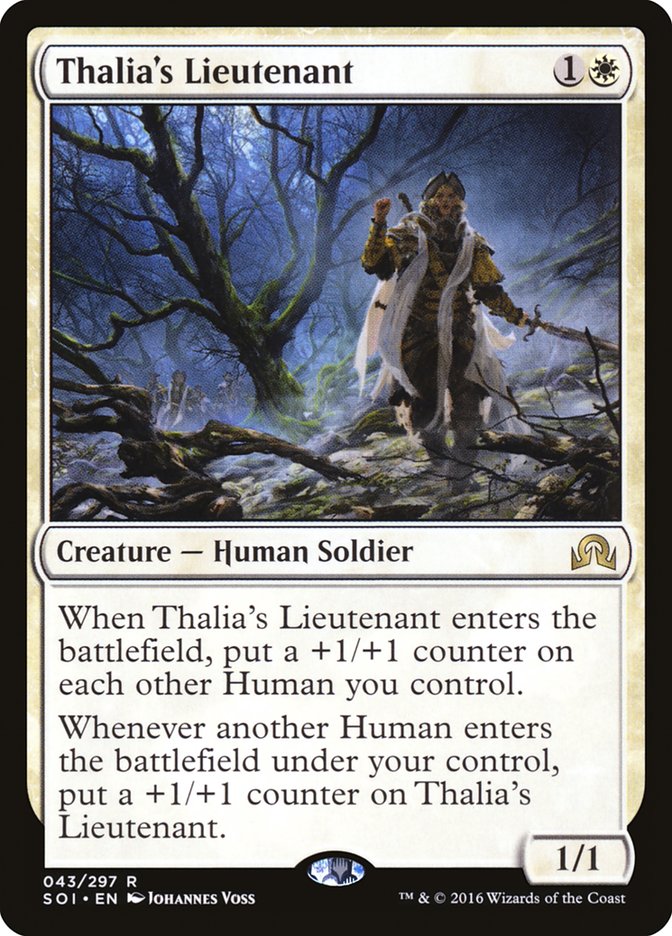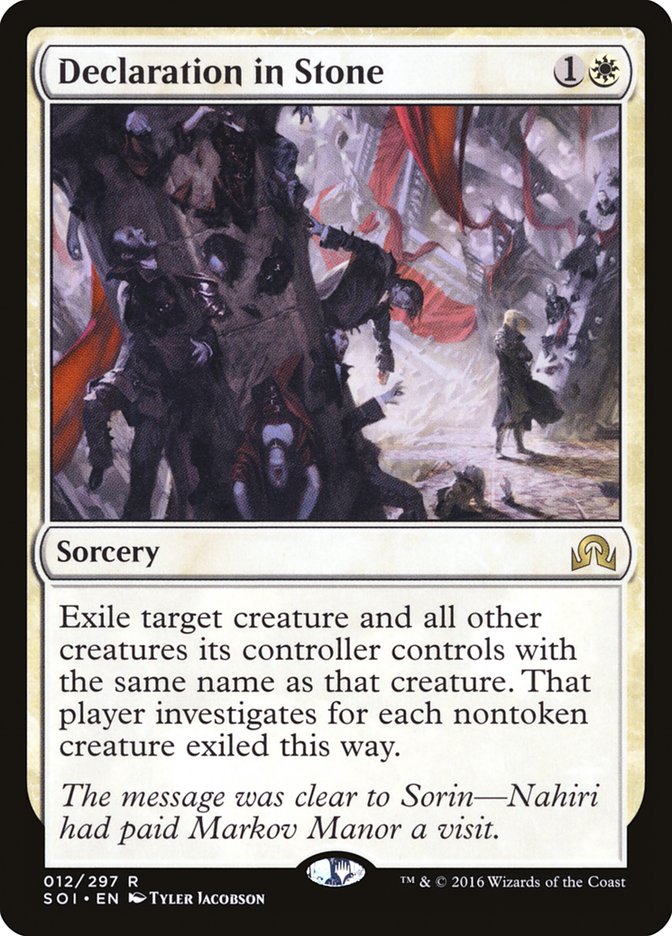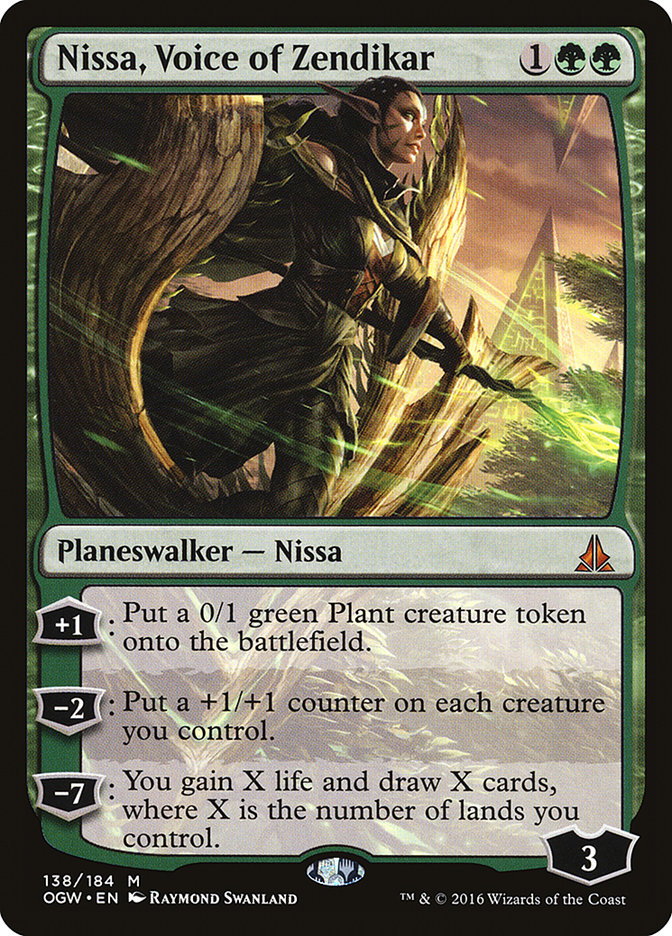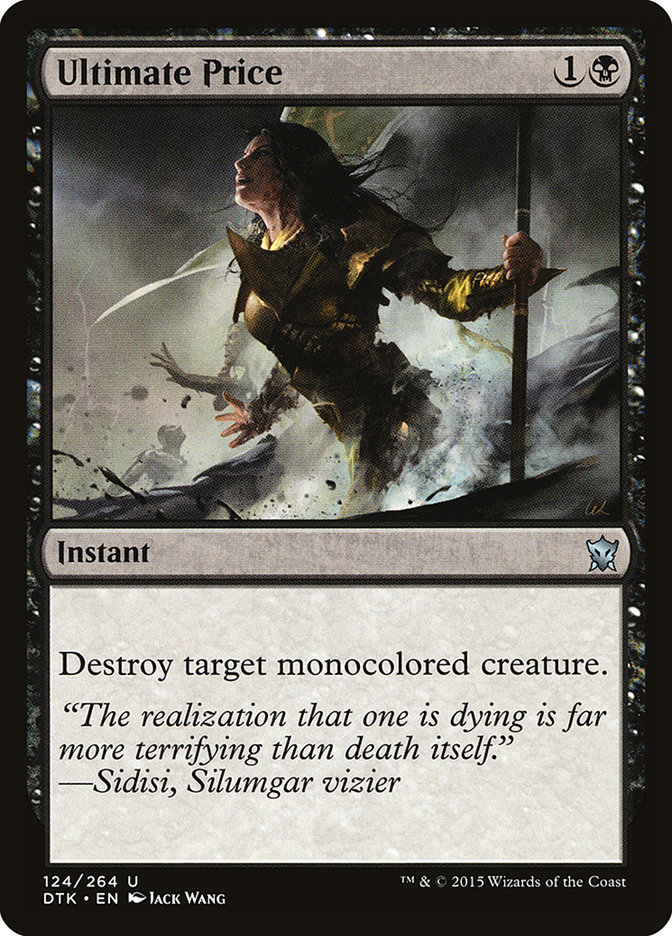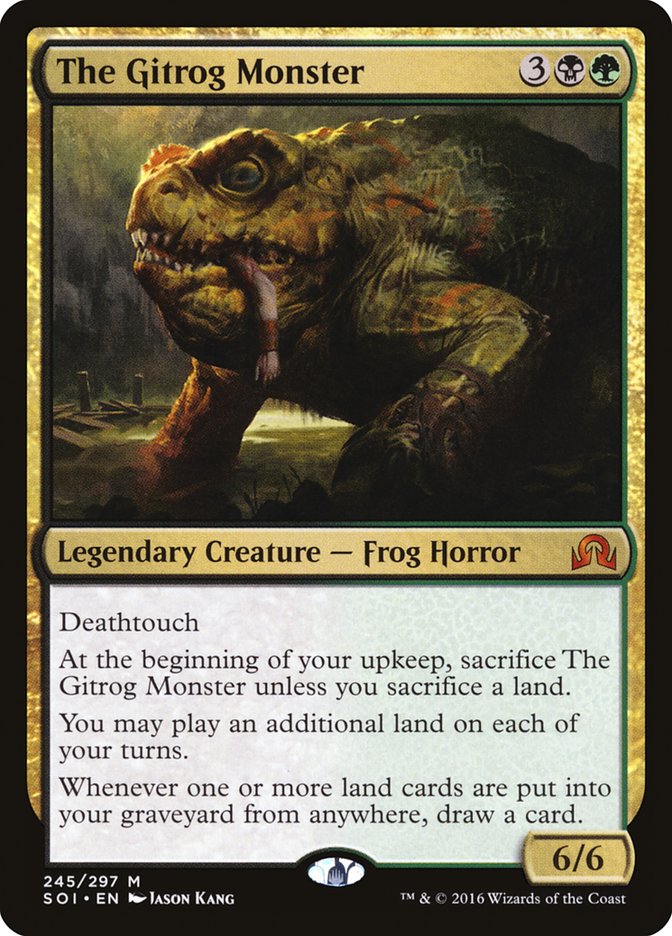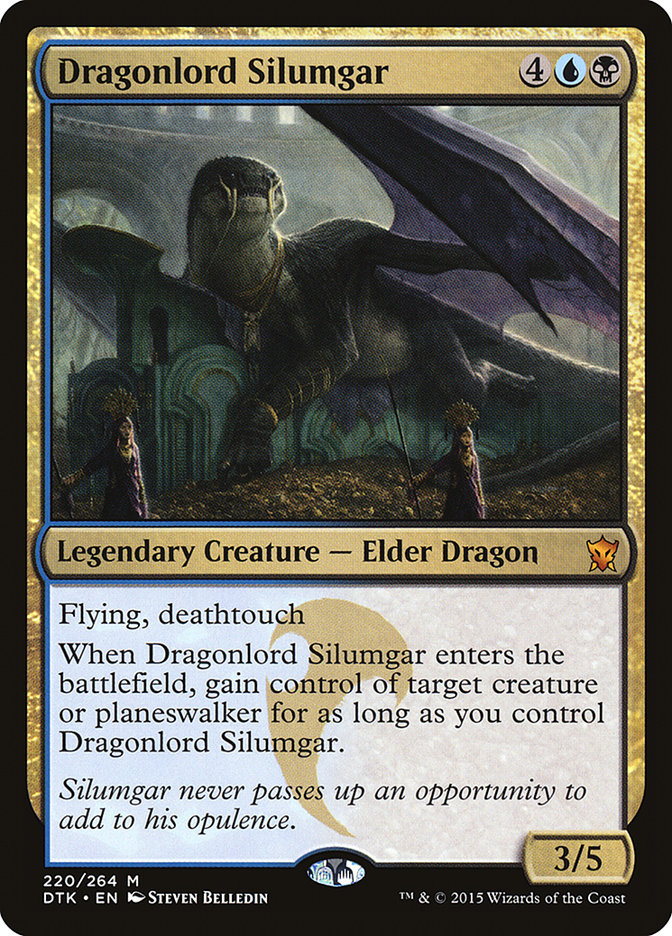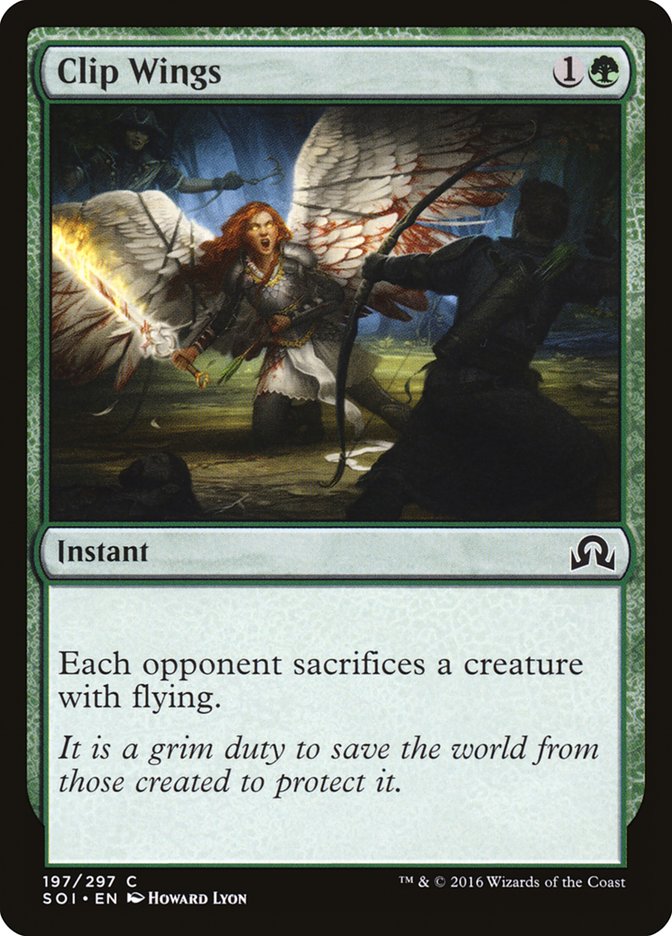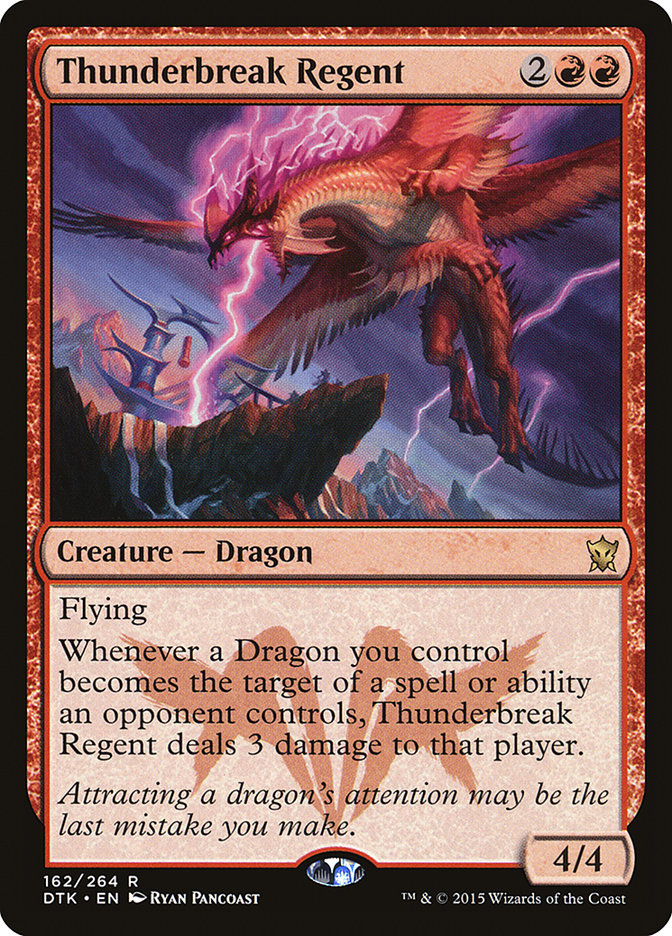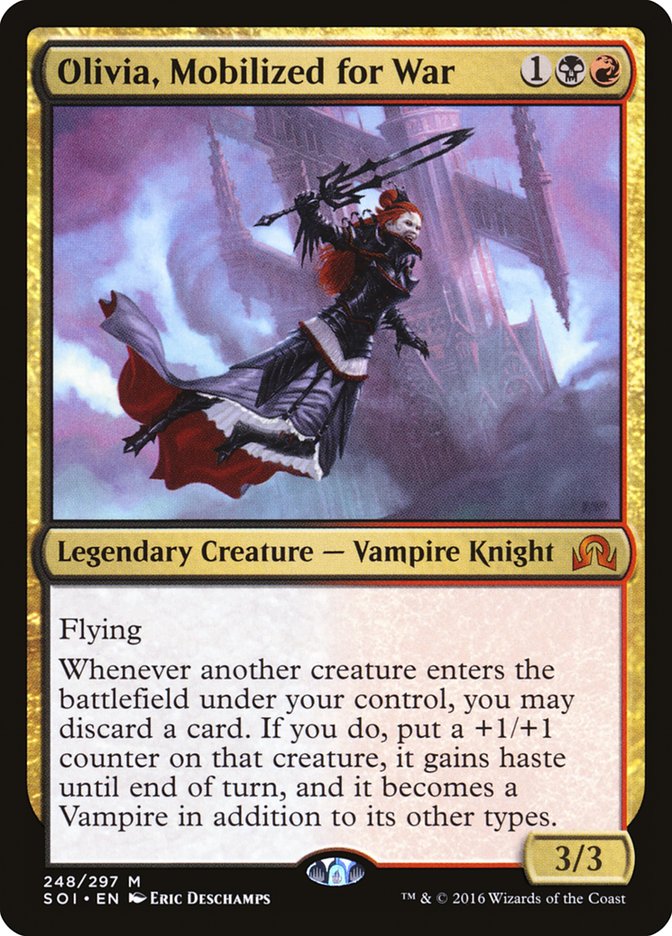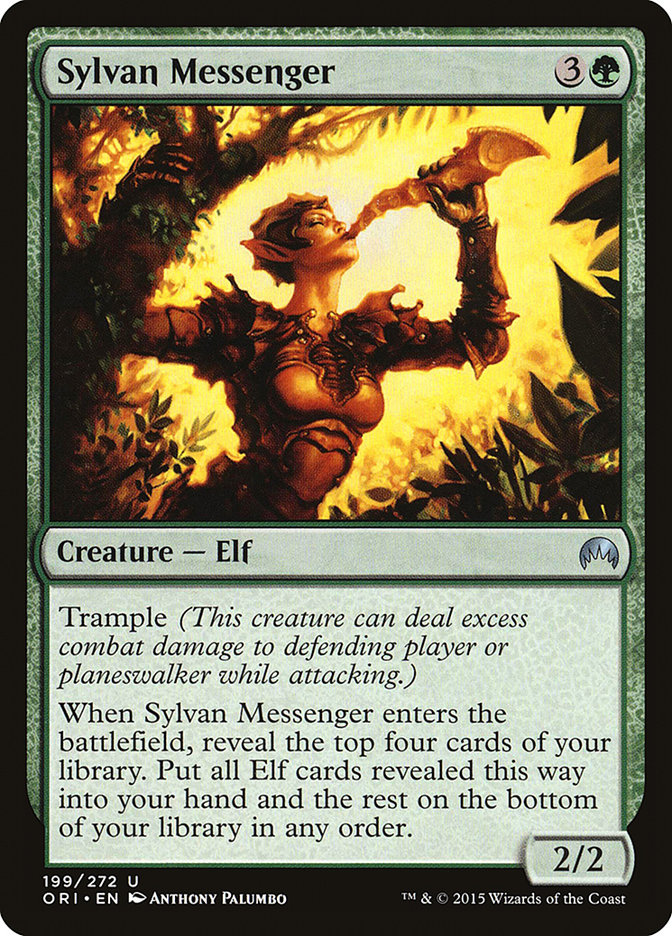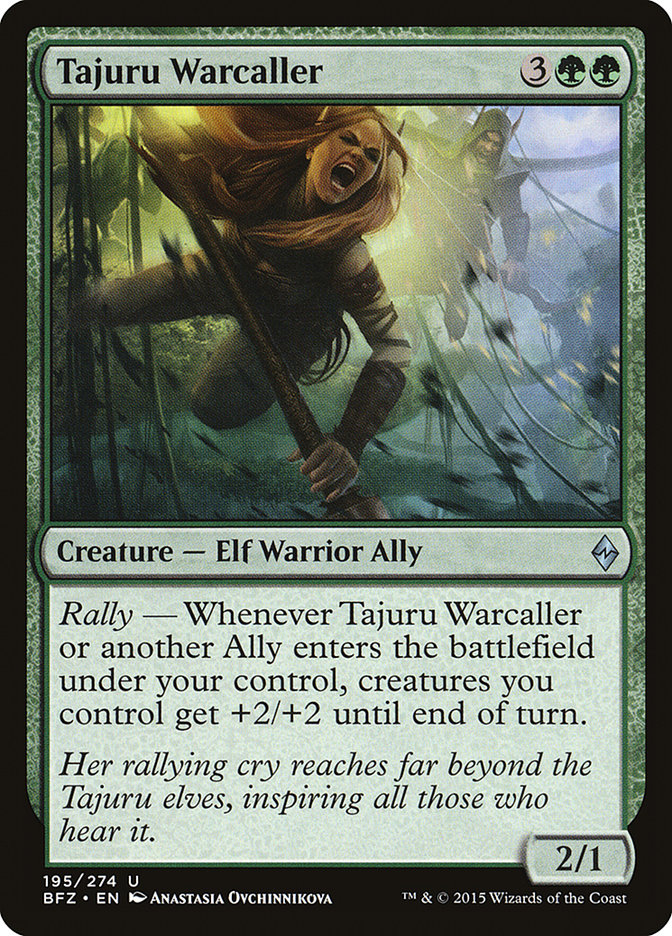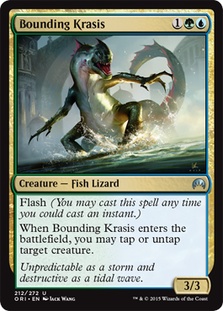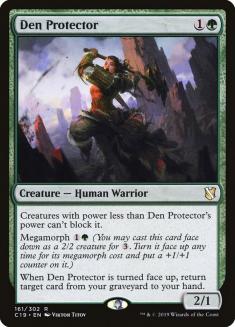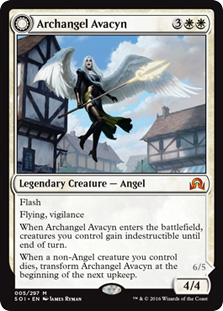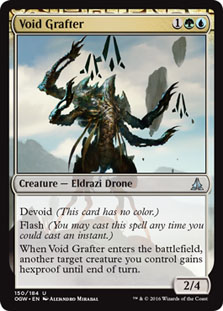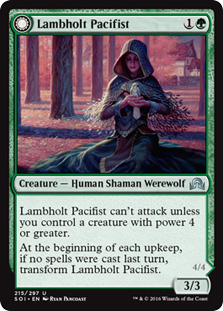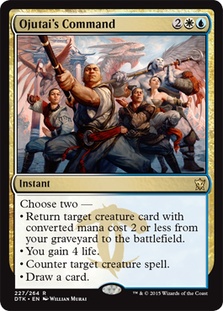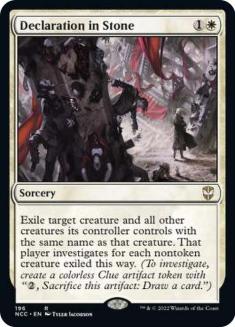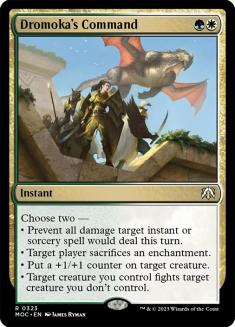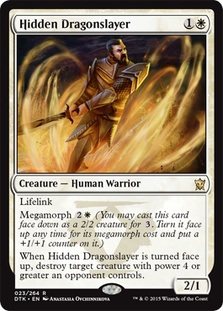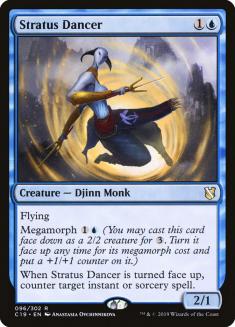Magic is one big game of Rock-Paper-Scissors. The metagame ebbs and flows and eventually comes around full-circle. It’s a guessing game of who can outmaneuver whom from week to week, a slowly moving process inhibited by how quickly people gather information and can acquire the cards for new decks.
I don’t personally have any new Standard decks from my own mind to share. While I will be attending #GPYNY this weekend, which is Standard, my focus has mostly been on the next two SCG Tour® events: #SCGINDY and #GPCharlotte, both of which are Modern. I have, however, been keeping track of the recent trends to the Standard metagame. Today I’ll be presenting some of the trends that I’ve noticed with Standard, some of which are fact and others my opinion.
1. Standard Is Moving from Extreme Back to Midrange.
The weekend prior to Pro Tour Shadows over Innistrad was flush with midrange decks, where I did well with my eighteen-land version of Mono-White Humans and G/R Ramp won the Open during the #SCGINVI. The #SCGINVI itself saw a fair amount of midrange with Bant Company and W/U Humans being top performers, but in the end Max McVety won with the most extreme deck of the Top 8, Mono-White Humans.
The Top 8 of Pro Tour Shadows over Innistrad was full of decks designed to beat Mono-White Humans and Bant Company, with a full set Kozilek’s Return in Goggles Ramp and eleven maindeck Languish between Seasons Past Control, Esper Dragons, and Esper Control. Mono-White Humans didn’t stand a chance. In the end the aggressive deck that’s resilient to removal took down the tournament: G/W Tokens.
Grand Prix Toronto saw G/W Tokens to be the best-performing deck, similar to how Bant Company was an overwhelming percentage of the Day 2 fields earlier in the season. I predict the popularity of G/W Tokens to continue and for other midrange decks to crop up to fight them. In a field full of midrange, you’ll see extreme strategies start to go over or under people again. This is partially why Esper Dragons won #GPToronto. This weekend at #GPNY, I expect there to be a ton of midrange decks fighting against each other (and causing unintentional draws) and for an extreme strategy like full-blown control or hyper-aggression to take the trophy.
2. Ultimate Price Is the New Hot Removal Spell.
Ultimate Price hits a large percentage of G/W Tokens as well as being good against any creature deck that isn’t 100% Eldrazi (none are). Ultimate Price still hits Jace, Vryn’s Prodigy. The Ramp decks are even shifting to more creatures. Declaration in Stone has been the top removal spell for a while now and is no doubt still a good one. Decks have adapted a bit naturally to crack Clues better or otherwise not get blown out too hard by Declaration in Stone.
Attacking into Archangel Avacyn can be a daunting task that Ultimate Price best solves — not completely solves, as the remaining creatures do still gain indestructible for the turn, but certainly allows for the pressure to somewhat continue. Pinpoint removal on Duskwatch Recruiter and Sylvan Advocate is just a bonus.
The new Sultai deck is a great example of utilizing Ultimate Price while having the deck’s most important creature be immune to it.
Creatures (25)
- 2 Dragonlord Silumgar
- 1 Shaman of Forgotten Ways
- 2 Nissa, Vastwood Seer
- 1 Kalitas, Traitor of Ghet
- 4 Sylvan Advocate
- 4 Thought-Knot Seer
- 3 Deathcap Cultivator
- 3 Tireless Tracker
- 2 The Gitrog Monster
- 3 Duskwatch Recruiter
Lands (26)
Spells (9)

I like both of these creatures quite a lot right now. They’re immune to Ultimate Price and are otherwise very hard to remove. Not getting tagged by Grasp of Darkness or Languish is a big upside. The Gitrog Monster also dodges a graveyard Kozilek’s Return, which greatly improves the G/R Ramp matchup.
3. Hangarback Walker Was Good for a While, but It’s Worse Now.
Hangarback Walker was good when people didn’t see it coming to instantly flip Archangel Avacyn. It’s also good if there aren’t many Reflector Mages going around and if people are trying to attack you with Dragon Hunter. It’s also decent against Languish to still retain a battlefield presence.
Now all of the above positive factors are less true. The Four-Color Cryptolith Rite deck has spawned a new home for Reflector Mage. Mono-White Humans is on the decline, as are Languish decks. The G/W Tokens mirrors revolve around being able to pressure each other’s planeswalkers, which Hangarback Walker is very poor at doing. It’s also embarrassing against Eldrazi Displacer, which is on the rise. If I were to play G/W Tokens, I’d do my best to get Hangarback Walker out of my deck in favor of the full four Lambholt Pacifist.
4. Esper Dragons Can’t Win Consecutively.
Esper Dragons needs several things to go specifically correct in a metagame to win. Jace, Vryn’s Prodigy needs to live. People need to be soft to Dragonlord Ojutai. Your removal package needs to be spot-on. When Esper Dragons is seen as a visible threat, as it is right now after its Grand Prix Toronto win, it’s fairly easy to beat.
Clip Wings is good against Dragonlord Silumgar and Dragonlord Ojutai, and I expect green decks to have copies in their sideboards if they didn’t already. With less Esper Control around, Esper Dragons will be the default deck to assume the opponent is on and thus people will get hit by a bare Silumgar’s Scorn less often. A more knowledgeable population is generally the downfall of Esper Dragons.
5. Ramp Is Shifting to Creatures.
G/R Ramp is a deck that needs to shift its big finish from time-to-time. Josh Dickerson won the last Standard Open with a lean version of G/R Ramp with four Kozilek’s Return and nothing but ramp and big Eldrazi. Brad Nelson and team EUreka build G/R Goggles Ramp, which caught Pro Tour Shadows over Innistrad off-guard.
Creatures (24)
- 2 Shaman of Forgotten Ways
- 3 Dragonlord Atarka
- 2 Ulamog, the Ceaseless Hunger
- 2 Sylvan Advocate
- 4 Deathcap Cultivator
- 3 Tireless Tracker
- 4 Ulvenwald Hydra
- 4 Duskwatch Recruiter
Lands (24)
Spells (12)

This latest version is from the brewhouse of Sam Black and Justin Cohen. It plays the Duskwatch Recruiter and Tireless Tracker engine and plays a more midrange and combat-oriented game instead of trying to clean up with Ulamog, the Ceaseless Hunger and such. It’s very easy to correlate Nissa’s Pilgrimage to Kozilek’s Return regardless of how many small creatures the G/R Ramp deck is playing, and no doubt people were still reluctant to overextend without knowing the full decklist.
6. Standard Is Due for an Aggro Deck That Isn’t Humans.
I don’t quite know what it is, but it’s likely to be at least partially red. Mono-White Humans lacks a good way to close out games once its initial flurry is spent.
Here’s a rather budget-friendly decklist from internet personality SaffronOlive that accomplishes a lot of what I’d want from the would-be archetype
Creatures (21)
- 1 Lightning Berserker
- 1 Zurgo Bellstriker
- 1 Pia and Kiran Nalaar
- 4 Incorrigible Youths
- 4 Ravenous Bloodseeker
- 2 Sin Prodder
- 4 Bloodmad Vampire
- 4 Insolent Neonate
Lands (23)
Spells (16)

I’d look into playing some black with Thunderbreak Regent and Olivia, Mobilized for War along with the madness elements. G/W Tokens and much of the format are soft to flying creatures, so Olivia, Mobilized for War and Thunderbreak Regent would pressure planeswalkers and life totals very well. You’d also get Ultimate Price and discard options if you like.
Vampires is an early-format deck that no one really built correctly and was justifiably dismissed early on. However, it was decently pushed and a good build of it could be what the format needs.
Another tribal aggro option by Aaron Barich:
Creatures (38)
- 4 Sylvan Messenger
- 4 Elvish Visionary
- 1 Nissa, Vastwood Seer
- 1 Dwynen, Gilt-Leaf Daen
- 4 Dwynen's Elite
- 4 Gnarlroot Trapper
- 4 Shaman of the Pack
- 4 Thornbow Archer
- 4 Tajuru Warcaller
- 4 Beastcaller Savant
- 4 Loam Dryad
Lands (20)
Spells (2)
Sideboard

Much like how flying pressures life totals and planeswalkers well, so does the keyword trample. Sylvan Messenger, along with pump spells in Tajuru Warcaller and Might of the Masses, helps you mow past chump-blockers. The reach from Shaman of the Pack punishes decks that also want to go wide and aim to protect themselves by blocking. Elves is obviously weak to sweepers, as are most aggro decks, but can be a fine option if sweepers are declining.
7. Humans Will Be Well-Positioned Again, but Not This Weekend.
As midrange rises, games slow down and blocking becomes a key component to people’s gameplans. Anointer of Champions is where you want to be against any deck planning on blocking against you. Of course, Standard hasn’t gone full-blown midrange just yet, but I believe it is on track to do so, likely at the next big Standard tournament following Grand Prix New York.
I still think the eighteen-land “Boss Humans” version is the best and wouldn’t want to go back to twenty or more lands and Archangel of Tithes to try to keep pace with the rest of the format. I’d just chill until the format is ripe for Humans. Or maybe I’m wrong and the format will move quickly enough that Humans will be great this weekend.
8. Bant Company Is a Great Deck to Play Every Week.
The first couple of weeks had Bant Company as the deck to beat. Andrea Mengucci still got second at Pro Tour Shadows over Innistrad playing Bant Company with a huge target on its head. The deck is undeniably powerful. Its greatest strength I feel is how malleable it is.
These are all cards that have seen play in the archetype in varying numbers depending on where the metagame stands on any given weekend. The beauty of the switcheroo every weekend is that people are likely to play around last weekend’s cards out of Bant Company. If the face-down morph was a Stratus Dancer in last weekend’s list, you’re in a great spot to get them with a Hidden Dragonslayer. Once someone gets you with a Void Grafter, you’ll be playing around it for life.
The worst part about Bant Company is the agonizingly long mirror match that has a high-percentage chance to end in an unintentional draw. It seems like some portion of those Bant Company players have moved onto G/W Tokens, which isn’t exactly a fast-paced matchup but still better than Bant Company mirrors.
Bant Company is good in a midrange field but weak to extreme strategies. I think it can go deep into a tournament but might lose along the way to Mono-White Humans or a sweeper-filled control deck. Still, the raw win percentage and the number of favorable matchups out there has me liking Bant Company as a choice for this weekend, and for the future as well. Due to its range of powerful flex options, it’s easy to alter your list to fill the desired role.
What to Play This Weekend?
If your goal is to do well, say to go 13-2 at Grand Prix New York, then Bant Company, G/W Tokens, or Four-Color Rite is the deck for you. If you want to win the event, you probably need to gamble a little bit on a heavy control deck or something hyper-aggressive. As for myself, I’m better off putting my chips on a good finish which gets me onto the Pro Tour, even though I prefer to roll the dice with aggression.
I don’t know what deck I’ll be playing, but I do know one thing:
When in doubt, play what you know.


